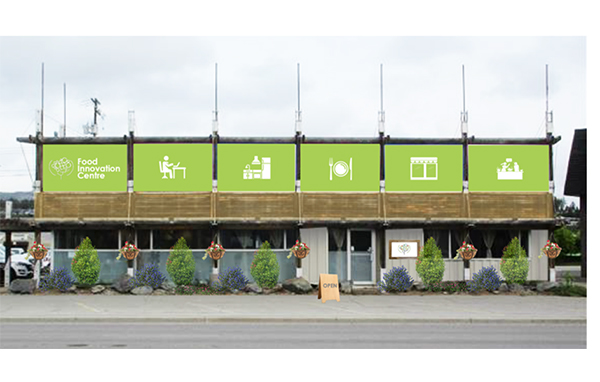With the snip of a ribbon and cautious optimism, Cranbrook’s new food hub opened its doors last week, marking what community leaders call a critical step toward strengthening food security in the East Kootenay region.
The $1.8 million facility, nestled in Cranbrook’s industrial district, represents years of planning and coordination between local food producers, community organizations, and multiple levels of government.
“This isn’t just about having another building,” said Ellen Sims, Executive Director of the Cranbrook Food Action Coalition, which will manage the facility. “This is about creating resilience in our food system when global supply chains have shown their vulnerabilities.”
Those vulnerabilities became painfully apparent during the pandemic and subsequent inflation crisis. Statistics Canada reported that food prices in British Columbia rose 11.8% last year, hitting rural communities particularly hard.
I visited the new facility during its community open house, where the gleaming commercial kitchen, cold storage areas, and processing equipment stood ready for local farmers and food entrepreneurs. The 6,000-square-foot space is designed to address what farmers like Jared Davis call “the missing middle” in local food systems.
“We can grow amazing food here in the Kootenays, but processing and distribution have always been our bottleneck,” Davis told me as he demonstrated how the commercial-grade equipment would help transform his farm’s excess produce into shelf-stable products. “Last year I had to let three thousand pounds of tomatoes go to waste because I couldn’t process them fast enough.”
The hub addresses this challenge by providing shared infrastructure that would be prohibitively expensive for individual producers. Specialized equipment for washing, cutting, packaging, and preserving will be available to registered users at subsidized rates.
British Columbia’s Minister of Agriculture, Pam Alexis, attended the opening ceremony, highlighting how the project aligns with the province’s food security strategy. The provincial government contributed $750,000 toward the project through the BC Food Hub Network, which has established similar facilities in Vernon, Vancouver Island, and the Fraser Valley.
“When communities can process more of what they grow locally, everyone benefits,” Alexis said. “Farmers find new markets, entrepreneurs create value-added products, and consumers get fresher food with fewer transportation emissions.”
The Columbia Basin Trust provided additional funding of $500,000, with the remainder coming from federal rural development grants and community fundraising efforts.
Mayor Wayne Price expressed pride in the community’s accomplishment but emphasized the work ahead. “Building the facility was the first challenge. Now we need to ensure it’s sustainable and accessible to those who need it most.”
That accessibility is a priority for project coordinators, who have implemented a sliding scale fee structure based on business size and revenue. Training programs are being developed to help new food entrepreneurs navigate food safety regulations and business development.
The hub aims to serve approximately 40 local food businesses in its first year, with capacity to expand as operations mature. Initial programming includes workshops on commercial food preservation, business planning for farm enterprises, and collaborative marketing strategies.
Cranbrook’s initiative comes at a time when food sovereignty has gained renewed attention across Canada. A 2022 report from Food Secure Canada found that regions with robust local processing capacity weathered supply chain disruptions better during recent crises.
But establishing local food infrastructure isn’t without challenges. Similar projects in other communities have struggled with operational sustainability once initial grant funding diminishes.
“The key is creating real economic value for producers while keeping costs affordable,” explained Dr. Hannah Wittman, a food systems researcher at UBC’s Centre for Sustainable Food Systems. “Food hubs need to balance social benefits with financial reality.”
The Cranbrook facility’s business model attempts to address this through a hybrid approach that combines fee-for-service operations with ongoing program funding and potential revenue from a small retail space featuring products made on-site.
For longtime Cranbrook resident Martha Courtenay, the investment makes sense regardless of the challenges. “I grew up when most of our food came from nearby. Watching our dependence on distant suppliers grow has been concerning.”
As I toured the facility, I couldn’t help but notice the contrast between the hub’s industrial efficiency and the deeply personal connections it aims to foster. Storage bins labeled with family farm names stood ready for the coming harvest season. Recipe cards for traditional preserving methods were pinned to a community board alongside high-tech scheduling software.
The facility will officially begin operations next month, just in time for the peak harvest season. Local producers have already reserved processing time slots for everything from tomato sauce production to creating frozen vegetable medleys for winter sales.
Whether this marks a turning point for Cranbrook’s food system remains to be seen, but the commitment is clear. As one young farmer told me while exploring the new commercial kitchen, “For the first time, I can imagine building a food business here that might actually support my family.”
In a region where agricultural traditions run deep but economic pressures have pushed many away from farming, that possibility alone may justify the investment.






